Chapter 1  Foreword This is a first instruction guitar book for children. Using video, musical notation and text it is an educational tool that facilitates the sharing of material between teacher, child and parent providing for a more enjoyable learning experience. The book starts by giving some direction as to: choosing a guitar; the basics of fingerstyle guitar playing; and, musicianship;, before providing exercises that focus on notes on the top three string of the guitar. These exercises aim to provide a solid basis in terms of technique, musicianship and reading skills that will equip the student to move onto further tunes with confidence. The book is designed for those learning through both individual lessons and group work. Videos are provided for all of the exercises in the book with video links supplied within the text.
Foreword This is a first instruction guitar book for children. Using video, musical notation and text it is an educational tool that facilitates the sharing of material between teacher, child and parent providing for a more enjoyable learning experience. The book starts by giving some direction as to: choosing a guitar; the basics of fingerstyle guitar playing; and, musicianship;, before providing exercises that focus on notes on the top three string of the guitar. These exercises aim to provide a solid basis in terms of technique, musicianship and reading skills that will equip the student to move onto further tunes with confidence. The book is designed for those learning through both individual lessons and group work. Videos are provided for all of the exercises in the book with video links supplied within the text.
Alan Geddes Contact: Chapter 2  Getting Started Section 1
Getting Started Section 1  Choosing a Guitar Choosing a Guitar The most suitable guitar for the music in this book is a nylon strung guitar. Guitars come in different sizes, for a 6-7 year old child a 1/2 size guitar would tend to be the most suitable moving to a 3/4 size guitar for an 8-10 year old child. If you have a local music shop then ideally it would be advisable to make a visit and get a professional opinion regarding the best size of guitar for your child. There are a number of companies who manufacture childrens guitars for beginners. Two brands worthy of recommendation are Lauren and Jose Ferrer. Section 2
Choosing a Guitar Choosing a Guitar The most suitable guitar for the music in this book is a nylon strung guitar. Guitars come in different sizes, for a 6-7 year old child a 1/2 size guitar would tend to be the most suitable moving to a 3/4 size guitar for an 8-10 year old child. If you have a local music shop then ideally it would be advisable to make a visit and get a professional opinion regarding the best size of guitar for your child. There are a number of companies who manufacture childrens guitars for beginners. Two brands worthy of recommendation are Lauren and Jose Ferrer. Section 2  The Basics of Finger-style Guitar Playing Sitting Position; Left and right hand technique Its important to establish some basic principles of technique.
The Basics of Finger-style Guitar Playing Sitting Position; Left and right hand technique Its important to establish some basic principles of technique.
The video link below lays out some basic principles of finger-style guitar. >Click here for basic guitar technique videos Reading Music Click on the link below for an explanation of the modes of musical communication used in this book. An explanation is given of both standard musical notation and guitar TAB. Students are advised to use the TAB as a means of figuring out where the notes are on the guitar fretboard but are encouraged to learn to read standard musical notation which, when mastered, offers more possibilities for reading music in real time. >Click here for reading TAB and Standard musical notation video Guitar Geography Connecting the music on the page with your ear and your guitar is the goal, so learning your way around the guitar, figuring out what all of the notes are called and how they relate to the musical notation is all essential. Click on the link below to access a training video that will help join up the dots.
The video is set out in a call and response format: guitar plays - video goes silent - you play back what you have seen and heard. >Click here for Ear to Instrument Training video Chapter 3  The Top 3 strings of the Guitar Chapter 3
The Top 3 strings of the Guitar Chapter 3  Exercise 1: Notes on the highest sounding 3 strings This book focuses on learning notes on the highest sounding three strings of the guitar. These notes are listed on the next page. Watch the video for this exercise and familiarize yourself with the notes before going onto the exercises that follow which focus on these 8 notes. >Click here to play the video for exercise 1 Go to the next page for the notation for exercise 1
Exercise 1: Notes on the highest sounding 3 strings This book focuses on learning notes on the highest sounding three strings of the guitar. These notes are listed on the next page. Watch the video for this exercise and familiarize yourself with the notes before going onto the exercises that follow which focus on these 8 notes. >Click here to play the video for exercise 1 Go to the next page for the notation for exercise 1  Chapter 3
Chapter 3  Exercise 2: Whole notes using musical notes E, F, and G on the guitars first string. Whole notes, half notes and quarter notes are initially used in the exercises.
Exercise 2: Whole notes using musical notes E, F, and G on the guitars first string. Whole notes, half notes and quarter notes are initially used in the exercises.
It is important that the music is played in time, that is the notes are given their proper counted value. In the associated videos you will hear the note values counted out aloud. With practice the note timings in music will become natural but in the beginning it is essential to focus on this element. The whole note lasts for 4 beats, count 1 2 3 4. Practice whole notes using the musical notes E, F and G in exercise 2. >Click here to play video for exercise 3 Go to the next page for the notation for exercise 3  Chapter 3
Chapter 3  Exercise 4: Half notes using musical notes E, F, and G on the guitars first string This exercise focuses on practising half notes on string 1 of the guitar. >Click here to play video for exercise 3 Go to the next page for the notation for exercise 3
Exercise 4: Half notes using musical notes E, F, and G on the guitars first string This exercise focuses on practising half notes on string 1 of the guitar. >Click here to play video for exercise 3 Go to the next page for the notation for exercise 3  Chapter 3
Chapter 3  Exercise 4: Half notes using musical notes E, F, and G on the guitars first string This exercise focuses on practising half notes on string 1 of the guitar.
Exercise 4: Half notes using musical notes E, F, and G on the guitars first string This exercise focuses on practising half notes on string 1 of the guitar.
The whole notes that were used in exercises 2 and 3 lasted for 4 beats, half notes last for 2 beats. If you would like to recap on note lengths then go back to the reading link in chapter 2 section 2. >Click here to play video for exercise 4 Go to the next page for the notation for exercise 4  Chapter 3
Chapter 3  Exercise 5: Half notes using musical notes E, F, and G on the guitars first string, no TAB supplied This exercise is musically the same as exercise 4 but with no TAB supplied, allowing students to focus on their reading skills. >Click here to play video for exercise 5 Go to the next page for the notation for exercise 5
Exercise 5: Half notes using musical notes E, F, and G on the guitars first string, no TAB supplied This exercise is musically the same as exercise 4 but with no TAB supplied, allowing students to focus on their reading skills. >Click here to play video for exercise 5 Go to the next page for the notation for exercise 5  Chapter 3
Chapter 3  Exercise 6: Quarter notes using musical notes E, F, and G on the guitars first string This exercise focuses on practising quarter notes on string 1 of the guitar. The half notes that were used in exercises 4 and 5 lasted for 2 beats, quarter notes last for 1 beat. >Click here to play video for exercise 6 Go to the next page for the notation for exercise 6
Exercise 6: Quarter notes using musical notes E, F, and G on the guitars first string This exercise focuses on practising quarter notes on string 1 of the guitar. The half notes that were used in exercises 4 and 5 lasted for 2 beats, quarter notes last for 1 beat. >Click here to play video for exercise 6 Go to the next page for the notation for exercise 6 
Next page
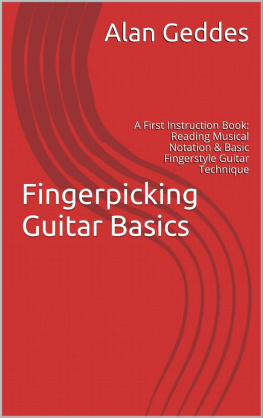

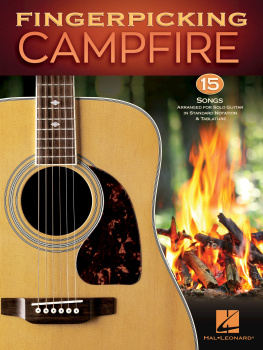


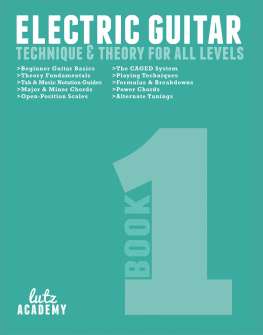
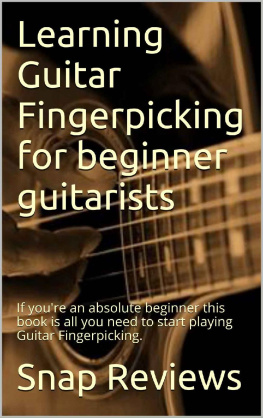
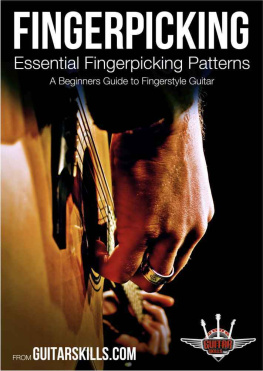
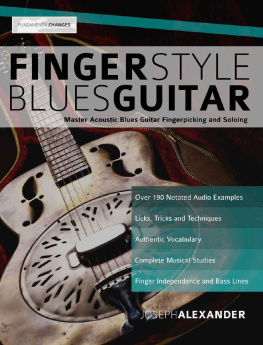
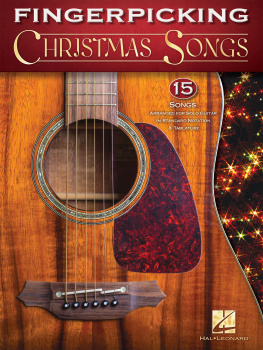
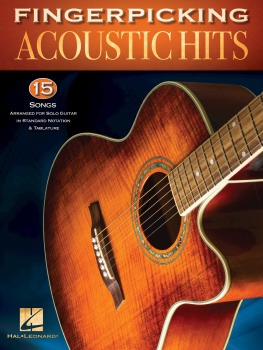
 Foreword This is a first instruction guitar book for children. Using video, musical notation and text it is an educational tool that facilitates the sharing of material between teacher, child and parent providing for a more enjoyable learning experience. The book starts by giving some direction as to: choosing a guitar; the basics of fingerstyle guitar playing; and, musicianship;, before providing exercises that focus on notes on the top three string of the guitar. These exercises aim to provide a solid basis in terms of technique, musicianship and reading skills that will equip the student to move onto further tunes with confidence. The book is designed for those learning through both individual lessons and group work. Videos are provided for all of the exercises in the book with video links supplied within the text.
Foreword This is a first instruction guitar book for children. Using video, musical notation and text it is an educational tool that facilitates the sharing of material between teacher, child and parent providing for a more enjoyable learning experience. The book starts by giving some direction as to: choosing a guitar; the basics of fingerstyle guitar playing; and, musicianship;, before providing exercises that focus on notes on the top three string of the guitar. These exercises aim to provide a solid basis in terms of technique, musicianship and reading skills that will equip the student to move onto further tunes with confidence. The book is designed for those learning through both individual lessons and group work. Videos are provided for all of the exercises in the book with video links supplied within the text. Chapter 3
Chapter 3  Chapter 3
Chapter 3  Chapter 3
Chapter 3  Chapter 3
Chapter 3 